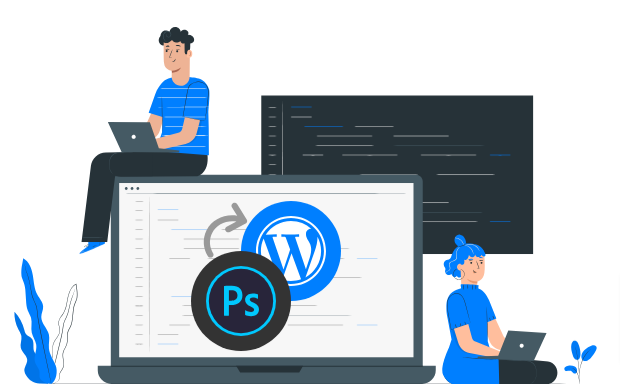This website uses cookies so that we can provide you with the best user experience possible. Cookie information is stored in your browser and performs functions such as recognising you when you return to our website and helping our team to understand which sections of the website you find most interesting and useful.
A Comprehensive Guide On NFT
The world around us is changing fast. Our system is undergoing a fundamental shift, and the innovations that are going to form the bedrock of future societies are coming to light.
Many who said that Cryptocurrency will shut down banks are now stating that NFTs are new investment opportunities. Everything that is rare and can have a digital form is up for sale!
“Total sales involving a non-fungible token (NFT) in gaming, art, sports, and other segments have gone from $36.5 million in 2018 to almost $14 billion in 2021.” – Statista
“The figures that make headlines may tingle your spine a bit, but do you know that more than 50% of NFT sales are recorded under $200. Yes, that’s right. Moreover, the average cost of minting and selling an NFT is between $70 and $120.” – Statista
So, why not get into the business of NFT, and start earning your way out of debts or hard times? Why is the average human not thinking about joining this space? What are the clouds of wonder that surround this mint opportunity of cashing out big? One word, CRYPTO.
People are still not truly familiar with the concept of digital holdings. Or what blockchain is? How does it work? Why is called the most secure thing to ever happen on the internet? Bitcoin is volatile, and risky, will NFT be the right bet as it is based on a similar concept?
The doubts won’t stop, and the questions won’t stop popping up until you accept that the only right way to get hold of NFT is to read this guide till the last period. Let us begin one step at a time!
We will cover the What, How, Where, and more about this intriguing subject. Sit tight.
What Is NFT?
The most basic question is answered in the most basic way. Remember your first artwork as a child? If you click a picture of it, run it through a platform like MetaMask, create a crypto-wallet, like on Ether, connect it to an exchange platform like OpenSea, upload the image, put in the details, click sell, set the price & royalties, voila!; your NFT is up for grabs.
Are you famous? No? Then I’m sorry but the task of selling this NFT is as tough as selling a painting of a new artist. The platforms are filled with random files and if you wish to stand out, you’ve got to have something that others don’t. Well, the rest is up to you.
Oh relax, here is the official explanation of the term NFT, or Non-Fungible Tokens.
“An NFT is a digital asset that represents real-world objects like art, music, in-game items, and videos. They are bought and sold online, frequently with cryptocurrency, and they are generally encoded with the same underlying software as many cryptos. Although they’ve been around since 2014, NFTs are gaining notoriety now because they are becoming an increasingly popular way to buy and sell digital artwork.” – Forbes
What is the difference between a Bitcoin and an NFT?
Well, first of all, Bitcoin though being on blockchain, is a currency and a fungible asset. Just like any other crypto-currency. You call it Dogecoin, Etherium, Polygon, or Yaba-Daba-Du, every crypto-coin is a fungible asset. This basically means that 1 coin = 1 coin. For instance, 1 Bitcoin can be exchanged for another Bitcoin and no value will be lost because they are one and the same. It is similar to exchanging 1 Dollar Bill for another 1 Dollar Bill.
Now in the instance of NFTs, no two files/records can be the same. It is like having a pack of rare baseball cards. Or if in India, a pack of rare Cricket cards. You cannot exchange a signed Virat Kohli Card with any other similar Virat Kohli Card without an autograph. It will be foolish.
Furthermore, you cannot exchange an MS Dhoni Card for a Sachin Tendulkar Card, two completely different players, two completely different values, and no comparison point whatsoever.
I’ll explain the Blockchain Ledger Concept in the next sub-head. Don’t worry, keep reading!
So, basically, NFTs are exclusive. The artist has the ultimate right to creation & may choose to receive royalties till death, the exchanging platform gets a cut every time the creation exchanges hands, and the buyers get the right to call it their own. The “Pride Of Ownership”.
Well, if you understand how fine painting collections can save you taxes, you know how NFTs can do the same! Rich secret and all. To be clear, NFTs are good investments if you buy the right one, and sell it at the right time. See, there are two rights here. So be careful.
How Does An NFT Maintain Its Exclusivity?
So, you now know NFTs are one of a kind; and wish to know how? Ok, keep your mind stable, don’t get confused, Google the terms you don’t understand, and stay with me. This can be a little tricky but if get hold of it, everything else beyond this will become easy to comprehend.
Ok, here we begin, NFT is a non-interchangeable unit of data stored on a blockchain, a form of digital ledger. The data units can be an image, videos, or audio. This public ledger is accessible at all times, anywhere, and holds the record of ownership/certificate of authenticity.
Blockchain is an evolving list of records connected together using cryptography. The thing that matters the most is the algorithm that runs this whole ledger. It is set to update automatically and is connected to nodes around the globe. Every block possesses a cryptographic hash of the previous block, a timestamp, and transaction file/data. Thus, if a hacker wishes to play his game, he will have to work on all the blocks connected to that single block.
It is kinda impossible. Remember the case of millions of dollars worth of cryptocurrency being stolen and then returned? The reason: is that the hackers couldn’t use it without getting caught. The line, that we just wanted to show the reality of crypto-vulnerability was for the people who don’t get the concept. Back to NFTs, although blockchain records are not unalterable as forks are possible, they may be considered secure by design.
Thus, NFTs are exclusive. No, you cannot just hit “Save As” and copy a piece of art that is worth millions. You’ll have a copy, and not the ownership.
How Does NFT Exchange Work? How To Setup Your Personal NFT Selling Account?
Most of the NFTs in the market today are based on the Ether Blockchain. Yes, there are other blockchains out there that have their own systems and accept exchanges of all NFTs, but the one that counts is Ether. Moving forward, here’s a brief on the Ethereum blockchain.
“An NFT can only have one owner at a time. Ownership is managed through the uniqueID and metadata that no other token can replicate. NFTs are minted through smart contracts that assign ownership and manage the transferability of the NFT’s. When someone creates or mints an NFT, they execute code stored in smart contracts that conform to different standards, such as ERC-721. This information is added to the blockchain where the NFT is being managed.
The minting process, from a high level, has the following steps that it goes through:
Creating a new block
Validating information
Recording information into the blockchain” – Ethereum
The first step to enter the NFT market is to have an NFT to sell. As we began explaining NFT, there was a brief on how you can go forward with creating an NFT. Here’s an in-depth step-by-step process to help you understand it all. Five steps and you can be a millionaire!
- You need to pick an artwork. An original one. It can be literally anything that can be turned into a multi-media file. The formats include JPG, PNG, GIF, SVG, MP4, WEBM, MP3, WAV, OGG, GLB, GLTF, and so on. Try to keep it under 40 MB.
- We’ll be using Ethereum, so you’ll need some Ether coins. You can turn the digital file into an NFT using many masking platforms, some of which are MetaMask, OpenSea, Rarible, and Foundation. The last one is somewhat hard to get in and has some of the best collections on offer. More on that later. So download one of them & create the NFT.
- It may cost you up to $100 worth of Ether or can be free if you use OpenSea, but you’ll need a crypto-wallet in both cases. Now choose a platform of your choice to make your selling account. The procedure is relatively straightforward. Follow the guidelines.
- Once your crypto wallet and selling account is connected, it’s time to put up your first masterpiece online. Click Create, upload the file from your PC, and fill up the smart form. This form is what stands between you and the copycat artist. It creates the block that will protect your ownership for the foreseeable future. Fill it all up carefully.
- The NFT token will be created and can be put to sale on the platform by going into collections and clicking the sell button. Fill up the price you would like to demand in exchange for it, choose whether you would like to gain royalties, and boom. Begin earning! You’ll need to market your creations and create a hype of your own to sell big.
Now, the next section is for the people who are thinking of entering the NFT space, not as a buyer or the seller, but as an NFT marketplace owners. After all, the people who make the most are the people who get the cut. Here’s a section for all the businessmen looking to develop an NFT platform of their own. Contact Netizens Technologies today, if you need to talk to an expert.
How To Develop An NFT Marketplace?
The NFT marketplace is expected to grow exponentially and can be a great feather to have in your portfolio. To all the investors and developers out there, this is the time to take action.
Here are the essential features that you’d need to work on.
- Storefront: To showcase bids, owners, preview, and price history.
- Filters: To sort NFTs based on the payment method, status, category, & collection.
- Search bar: To enable users to search for a particular NFT by typing their preference.
- Create listings: To enable users to create and submit collectibles. It should allow them to upload files, and enter the name, tags, and description for block creation.
- Buy and Bid: To enable users to invest in NFTs. It should possess modules to track bids, showcase current status, and include expiration protocol.
- Crypto-Wallet Integration: A wallet that allows users to store, send and receive non-fungible tokens as well as receive and make payments for the NFTs. The best way to attain it is by integrating an existing wallet like Coinbase, Formatic, or MyEtherWallet.
The technologies that will be required to build an NFT platform from scratch are as follows:
- Platforms For Blockchain: Ethereum, Flow, Tezos, and Cardano.
- Platforms For Storage: IPFS (InterPlanetary File System), Filecoin, and Pinata.
- Frame-Works For Front-End: React, Angular, & Vue.
- NFT Standards: ERC-721, ERC-1155, FA2, dGoods, and TRC-721.
To conclude,
The process of developing the entire platform will be explained in the upcoming blog. That is all for now. You may be feeling a little overwhelmed by all this information. Take some time to gather your thoughts and feel free to ask questions. As mentioned above, you can get in touch with Netizens Technologies if you need a professional to clear your doubts. Hope this write-up assisted you in getting hold of the NFT concept from a basic point of view. Share your thoughts!

Let's Start Your Project
Get free consultation for your digital product idea to turn it into reality!
Get Started






